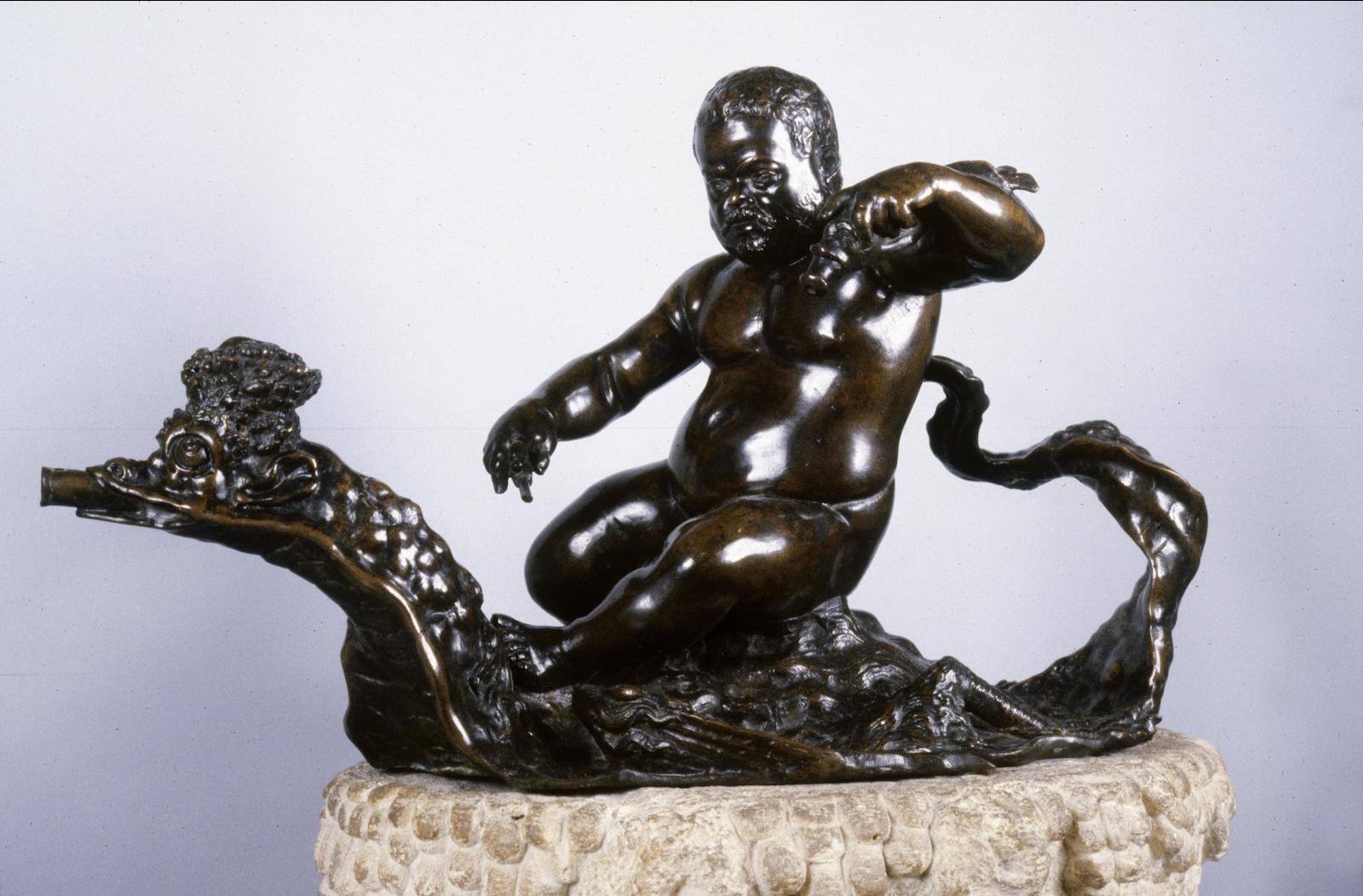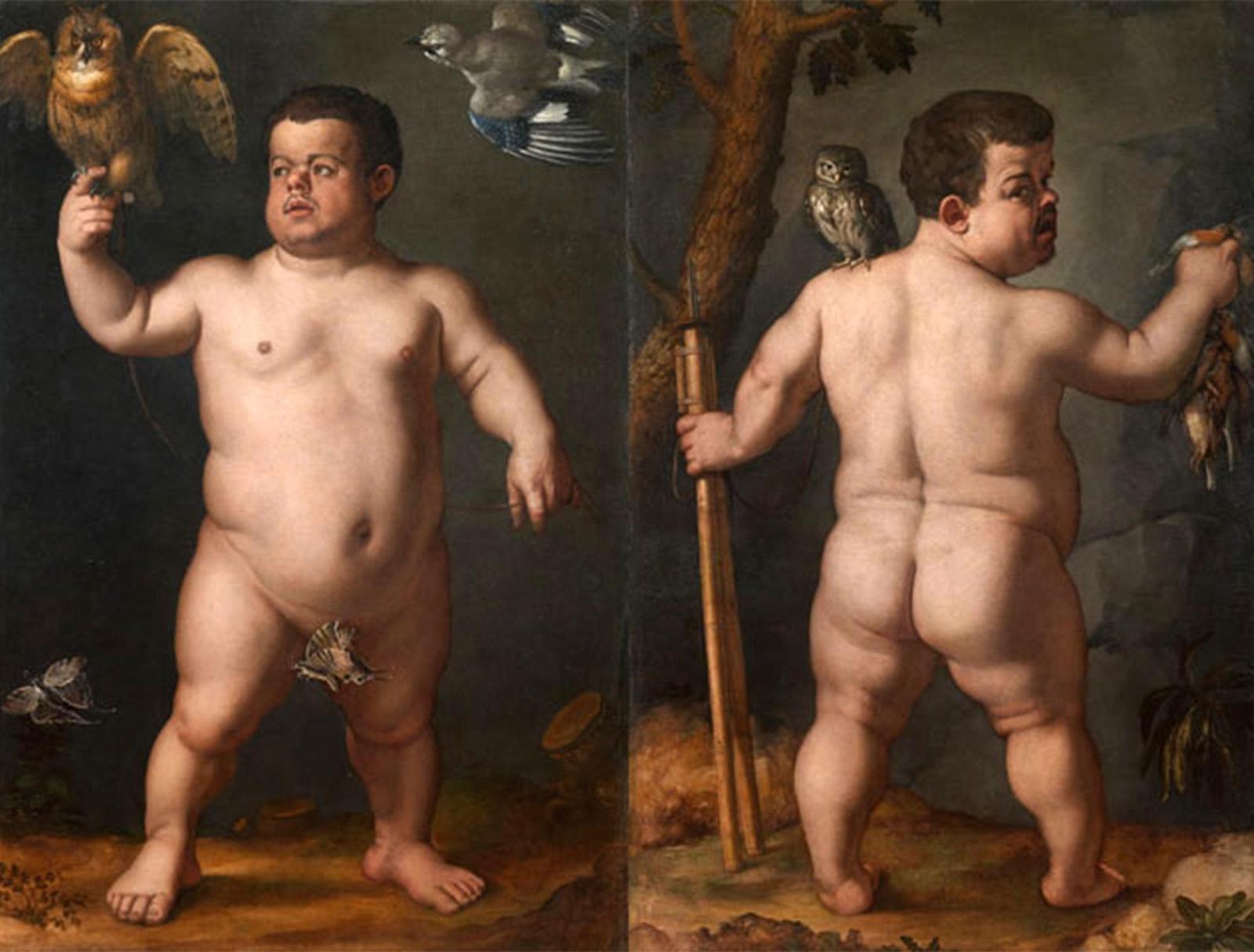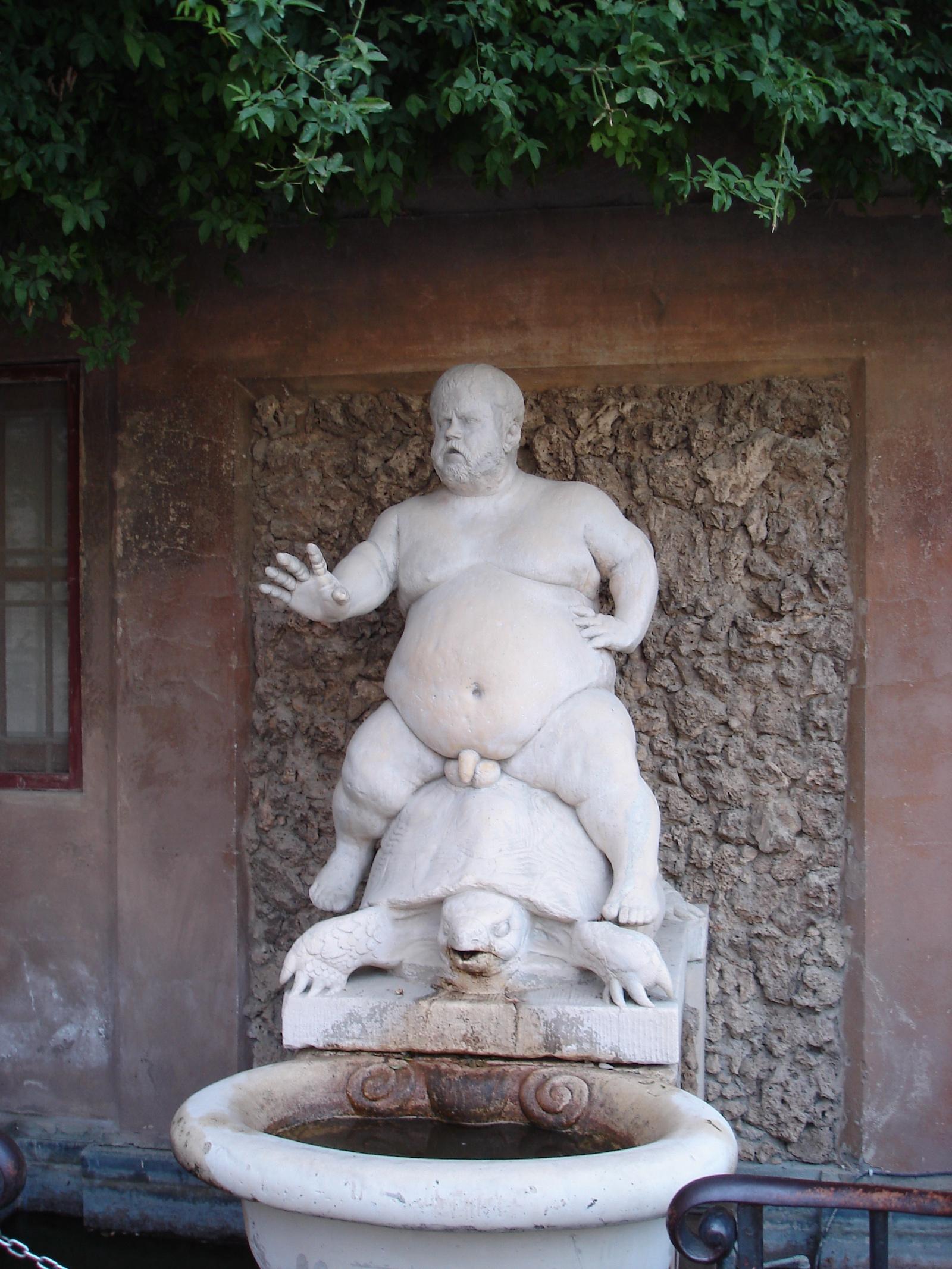Though he did appear in group paintings on numerous instances starting in the late 1400s, Morgante got a series of individual full-figure portraits and statues.
In 1550, Bronzino completed a full-figure portrait of Morgante in the nude, casting him as a fowler. To be more precise, it was a double portrait, as one version portrays him from the front, another from the rear. Attributes of Morgante here are the butterfly and the pygmy owl, both symbolizing the fact that he was a jester or “fool” in the court. The butterfly, for instance, appeared in the tarot card depicting the fool, while the pygmy owl, with its diminutive size, underscored Morgante’s condition.
This double portrait, while seemingly making fun of Morgante’s appearance, does have a serious programmatic intent, though: it inserts itself into the paragone debate, a discussion on what art form, between painting and sculpture, was the superior one. By painting a double-sided portrait, recto and verso, Bronzino thought he could demonstrate the superiority of painting over sculpture. “Because Bronzino’s portrait is in a monumental and formal format, the sitter must have been cherished as well; it is none other than the dwarf Morgante [sic],” wrote art historian Gabriela Jasin in the book A Scarlet Renaissance.
Restoration work from the 1800s adorned Morgante with vines, grapes, and wine, and turned him into Bacchus. His full nudity was considered more appropriate for a mythological character than a court jester.































